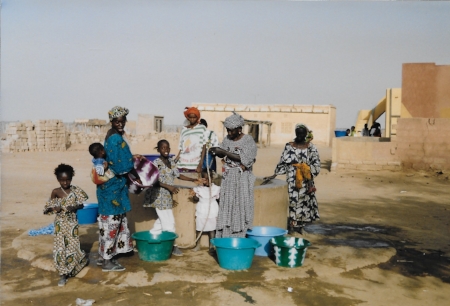Note: In the next few blogs I will relate a sensational episode from my field journals covering the far flung and hazardous areas of northeastern India. I am dedicating these blogs to Dr. Drew Dixon, who is now a prominent medical doctor with a beautiful family and is heavily involved in a career of helping scores of other people become better off.
(States of Mizoram, Manipur, and Nagaland, India: October, 2000): Drew Dixon, a young college graduate from a fine Christian home in the Denver area, somehow got ahold of one of my travel journals and read it. His plans included going to medical school, but he was looking for some real-life medical experience while waiting to determine which school he would attend. When he read of my experiences with Project C.U.R.E. and our impact on world health, God seemed to tug at his heart and compelled him to learn more about Project C.U.R.E. As a result of a meeting Dr. Douglas Jackson and I had with Drew and his father, Dr. Jim Dixon, Drew decided to work full-time for Project C.U.R.E. He even raised his own money to come on as a stipended volunteer.
We started Drew out in the warehouse to get a feel of the scope of the domestic side of Project C.U.R.E. Very soon Doug promoted him to logistics coordinator to oversee domestic truck transportation and the shipping of containers into foreign ports.
To help Drew get an idea of Project C.U.R.E.’s international procedures and policies, I asked him to accompany me on a trip to northeast India. A ministry organization, headed by John Pudaite, had made application for Project C.U.R.E. to help them complete a hospital in a city called Sielmat, in the far flung northeastern state of Manipur. Additionally, there were a number of other clinics and hospitals in the northeast that John wanted us to visit and assess. We agreed to schedule the needs-assessment trip for late October and early November. I was praying that the India trip would make a life-changing and unforgettable impression on Drew.
The trip required several layers of permission, since our destinations were considered restricted areas for foreign travel. Strangely, the restrictions were set in place not by the US State Department but by the Indian government. For a time, it appeared that the whole trip would be scratched. Civil and military unrest isn’t uncommon in northeast India. Old feelings about secession and gaining independence from India are still strong in the freedom-fighter hearts of the people in Manipur, Mizoram, and Nagaland. India’s military still occupies those areas, even though New Delhi granted them statehood status.
Our flights took us through Bombay, Calcutta and on to Aizawl, Mizoram, where John and Evelyn Pudaite and a small reception committee of government dignitaries were there to meet us. The population of Aizawl numbers about five hundred thousand. We were taken to the local government headquarters to be registered. As I mentioned earlier, the Indian government in New Delhi considers the three states we’ll be visiting restricted areas. The northeast cluster of states doesn’t really feel they should be a part of the rest of India, not only because they are separated physically from India by Bangladesh but also because the languages and customs are different, the people ancestrally look more Mongol than Asian Indian, and their religion is different. Instead of following the Hindu religion, about 80 percent of the people in northeast India are Christians, and they resist being governed by Hindus or Muslims. But any notion of independence is severely punished.
While the rest of our party was arriving in Aizawl and getting organized, Drew and I headed out on a ten-hour jaunt to an area called Lunglei to assess another hospital and several clinics. About half way there we had to stop for the night at Chittalang. Drew and I were awakened about sunrise the next morning by a sound that resembled an air-raid siren. I got up, pulled on my clothes, and went outside to investigate. On the branches of the eucalyptus trees and the broad leaves of the banana plants, as well as on the ceiling of the covered walkway outside our room, was a countless myriad of large winged insects about four inches in length that were green in color and way noisier than any jungle insect ought to be. A very loud whistle emitted from its posterior, and the sound kept going for at least ten minutes straight. I mentioned the annoying bug to our host at breakfast, and he said the insect was just singing. Local folk songs had even been written about the pesky pestilence.
After a long, long day of hard travel, Drew and I made it back to Aizawl and checked into the hotel where the rest of the team members were staying. A big percentage of the group was sick with vomiting and diarrhea. Thankfully, our side trip to Lunglei had allowed us to dodge that bullet.
Monday, October 30
Upon finishing our work in Aizawl, we flew on to the adjoining state of Manipur, India. Again, even though we obtained permission from the Indian government in New Delhi to enter the restricted area, we had to register in Manipur after our arrival on Indian Airlines flight 211.
John Pudaite’s mission compound in northeast India is located in Sielmat, a village about an-hour-and-a-half drive beyond the capital city of Imphal, Manipur. There they have a Christian hospital, a school of fifteen hundred students, a seminary, several quite large churches, and lovely brick homes for staff members. John planned for the team members to stay at the mission compound in Sielmat today through Saturday. Laundry facilities would be available, and kitchen facilities could accommodate the needs of the group very well.
But when we arrived at the Imphal International Airport, the Indian military authorities wouldn’t grant permission for the group to travel from Imphal to Sielmat or stay overnight there. We received approval to travel each day to and from the mission compound, but with the stipulation that we would return to the capital city by night and stay at the Imphal hotel on Tiddim Road. We learned that there had been some civil unrest recently. Certain insurgency groups and university students were making demands upon the Manipur and Indian governments to address the oppressive actions of the Indian military army, as well as certain claims of rape and assault by the regional military group called the Assam Rifles and additional pressures applied by the local Imphal police.
John and Evelyn Pudaite were disappointed that the group won’t be able to stay at their compound. It will definitely be an inconvenience to hire a bus each day to haul all of us one and a half hours one way from Imphal to Sielmat and the town of Churachandpur. But it was agreed that we will simply do the best we can with what we have and endeavor to have a successful week.
The Imphal hotel’s condition and management made it even tougher to adjust. The place is dirty, and deferred maintenance is about to swamp the facility. There is only one sheet per bed and no toilet paper, and the carpets are not only old but filthy. The towels are stained and not thoroughly clean because they have been laundered over the years in cold, dirty water without soap. The grounds have been left unattended except for holy cows, which have been allowed to wander at will and munch the lawn and shrubs. In order to relax in bed, it is necessary to put a piece of clothing over my pillow to block out undesirable smells and unwanted soiling.
Tuesday, October 31
At 6:30 a.m., our entourage left the Imphal hotel in the old beat-up silver bus that we had rented. We were headed to complete the needs assessment at the Christian hospital located in Sielmat. The traffic was heavy, and we had to stop many times for military checkpoints, so it took us two and a half hours to make the journey instead of the normal one and a half hours.
The Christian hospital is far better off than the government hospitals. But they too have some pretty pathetic needs. They have no monitors, EKG machines, or defibrillators, and their lab equipment is very poor. They had made some homemade IV poles out of wood, and none of the staff had ever heard of oxygen generators. Their closest supply source for bottled oxygen is nearly six hundred miles away. Sometimes the bus brings it to them; other times not. But the hospital was clean, and I easily observed that the people who work there care a lot about what they’re doing.
When we finished our needs assessment at the Christian hospital, Dr. Joute and others afforded me a wonderful experience. They had dug a fresh hole about eighteen inches deep and had placed a small-sized rubber tree next to the hole. They had a little ceremony and asked me to plant the rubber tree in front of the hospital. It was a great honor. They also made a plaque commemorating the occasion, and when I was finished planting the tree, they placed a bamboo guard around the tree and very properly affixed the plaque. They told me I must return each year to check up on my tree.
At lunch the Indian Children’s Choir came to where we were eating and entertained us. Last year the group toured the United States raising support and scholarship money. They were great kids. It’s great to have Drew along on the trip. He has a lot of insight and loves the medical emphasis. And it’s wonderful to have someone I can turn the camera over to so that I don’t have to worry about the photo documentation.
During the afternoon, Drew, John, a couple of other doctors, and I toured the government hospital. You can only imagine what a sad mess we found. Once again, I prayed as I walked the halls that I will never be in an automobile accident anywhere, but especially in India or Africa, where they would throw me on the back of a truck and deliver me to a local government hospital while I was unconscious!
Next Week: Grenades and Gun Fire

























